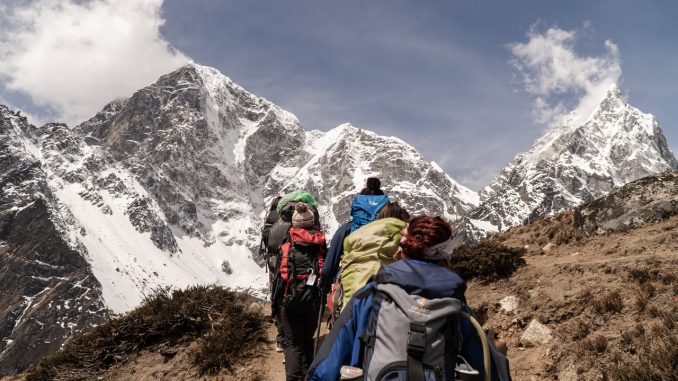
The level of inactivity among children has rocketed in recent years, resulting in rising levels of obesity and the likelihood of serious health problems in adulthood. Making walking a regular part of children’s everyday lives is a good way of counteracting this worrying trend, and they could still be reaping the benefits of a healthy, active lifestyle for many decades to come. The important thing is that walks need to be planned to suit the child’s interests and abilities: don’t expect them to enjoy walking or landscapes for their own sake in the way that many adults do.
Rather than simply going for a walk, make it seem more of an outing or adventure by building the walk around another activity: for example a local event, a hill to fly a kite, a park or recreation ground, a ruin, railway, waterfall, beach, wildlife park or other visitor attraction or a visit to a friend.
Make it a treat rather than a chore. Take nice things to eat and drink along the way, and maybe have a picnic.
Don’t make it too long or too hard. Do stay patient and be prepared to go at the pace of the slowest person in the group, stopping to look at things along the way. With regular walking you will build up your fitness.
Sometimes you seem to have a huge amount of energy one minute and become tired and bad tempered the next. Be prepared to cut the walk short and congratulate yourself on any special efforts or achievements.
Make sure you have comfortable clothes and shoes and are protected against sun and rain. Carry extra layers and be prepared in case you get hot or cold in rapid succession. Take a change in case you get wet, and lotion for bites and stings.
Take a small rucksack or pack to carry — but remember you may end up carrying it most of the way yourself so don’t pack too much.
Choose routes with plenty of interest along the way. It’s great fun clambering over things such as boulders, tree trunks, small steep hills or dunes; jumping over streams; climbing trees, rocks and play equipment; looking for animals, birds, trees, people, buildings, vehicles, farm, railway and water features; and collecting tree seeds, leaves, shells and small stones. They are generally bored by flat, straight, featureless paths, lengthy stretches of field edges, and wide-open landscapes.
Look where you are on a map if you have one.
Take a friend, or join forces with another family. Try a family group walk such as those organised by some Ramblers groups, where there are other children.
Try to make walking part of your regular journey to school. Not only is this good exercise (and helps reduce the congestion of the “school run”), it is also sociable and has actually been shown to improve children’s academic performance. If you’re concerned about walking on your own, find out about local schemes such as Safe Routes to School, School Travel Plans and Walking Buses. Ask the school or the local council, or contact Walk to School or Walking Bus.
